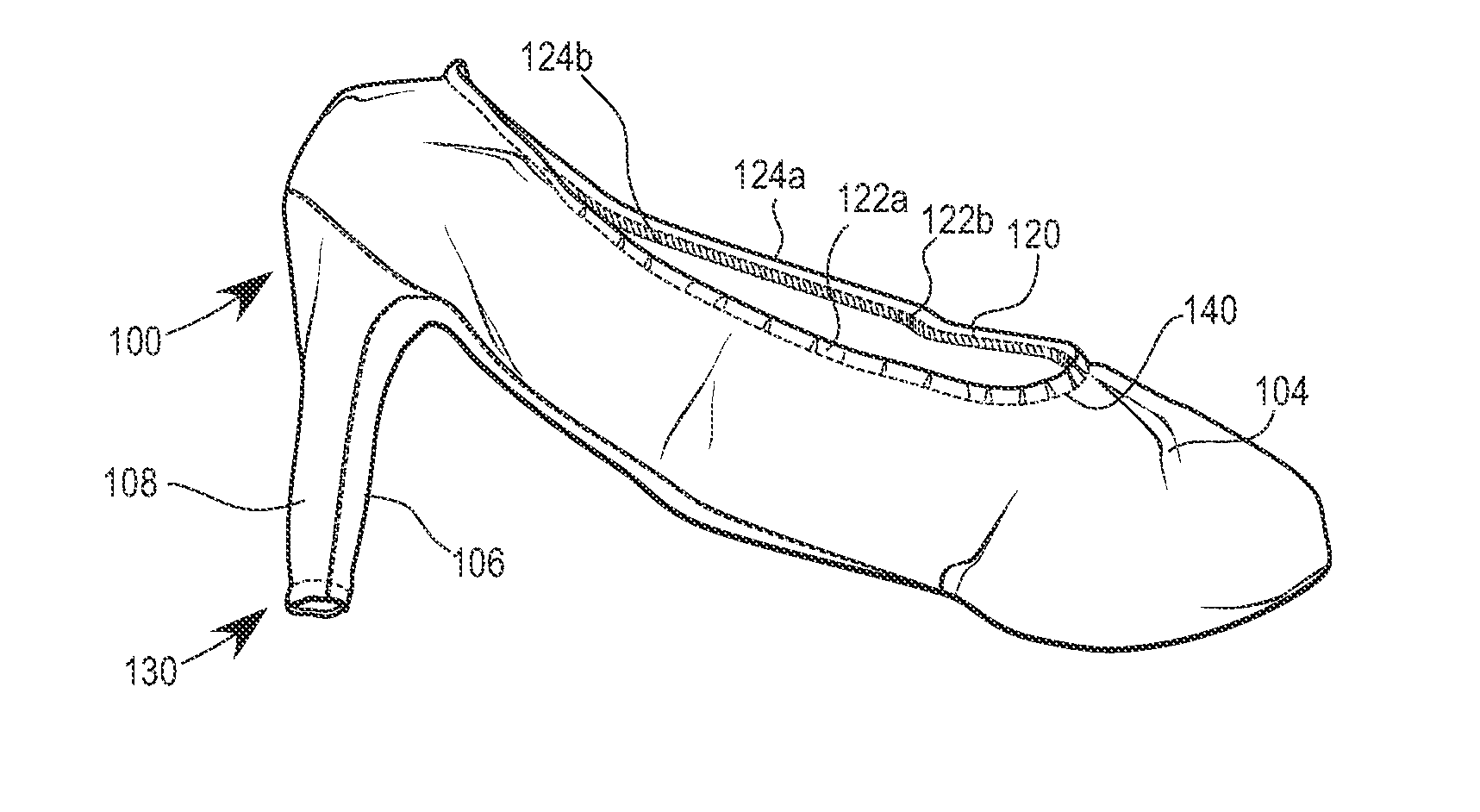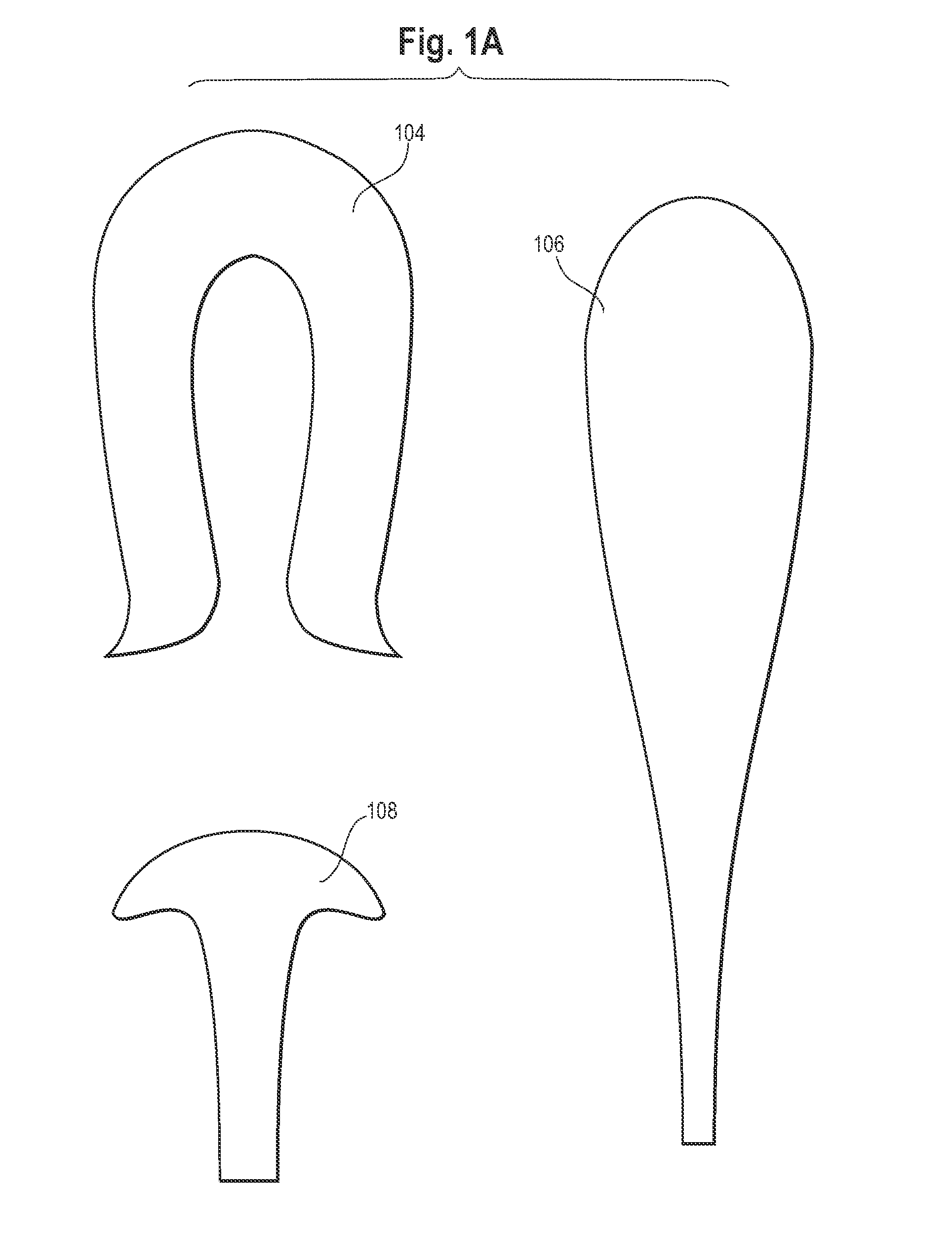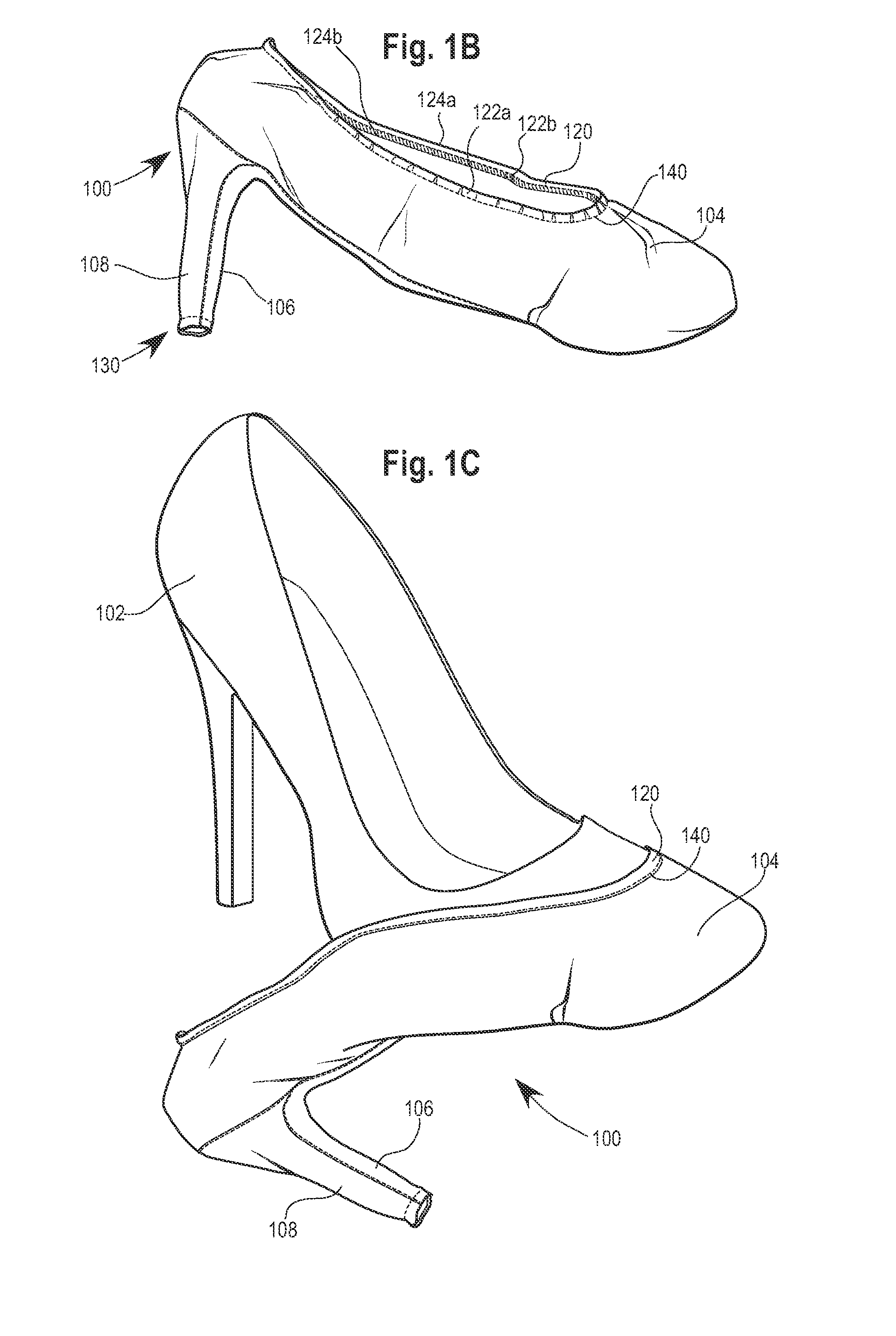Consumers may simply build a large collection of footwear, but this may be very expensive and require considerable storage space.
Further, it may be inconvenient if one wishes to change the look or appearance of their shoes throughout the course of a given time period (e.g., day, week, year, season, trip, etc.), for example, as they may be away from their shoe
closet.
Additionally, over time, the appearance of a shoe may decline or degrade to an unwearable state due to
exposure to the elements such as sun, rain or puddles,
dirt, and salt.
Conventional galoshes are made of stretchable rubber materials that are generally less adaptable to a variety of different shoe designs and sizes, non-breathable, and require numerous different shapes and sized to be provided in order to accommodate different styles of footwear.
Due to the friction created between the shoe and rubber of the galosh, these types of overshoes are not very easy to put on over a shoe and / or remove from a shoe.
To address the latter problem, some overshoes or galoshes include a zipper or other external
fastener in order to make the galoshes easier to install over the shoe, however, the fasteners may in turn scratch, mar, or damage a surface of the shoe or the user's other clothing (e.g., sock, stockings, pants, leggings, etc.).
Not only does such a configuration leave a portion of the sole exposed to damage and / or the elements, thus reducing the wearable life of the shoe, the portion of the cover extending onto or under the sole of the footwear may also create discomfort when walking due to the protruding nature of this portion relative to the exposed sole area and exposes the cover to
wear and tear due to the positioning of this portion of the cover below the sole.
While these materials are stretchable, the covers described in the '510 patent have limits to their elasticity.
Further, the components of the cover in the '510 patent are stitched together using standard thread, which further limits the elasticity of the cover.
Further still, the '510 patent uses a
rope elastic band near the shoe opening, which can damage the shoe due to the strength of
rope elastic and / or make the shoe uncomfortable to wear.
Such a cover may need to be removed from the shoe for extended periods of time due to the risk of damage.
Thus, the features of the '510 patent combine to make a complicated cover that may be difficult to apply and is not
usable for a variety of different shoes having specific sizes and shapes.
The cover's frame may also create discomfort when walking due to the protruding nature of the frame relative to the exposed sole area.
With this configuration, a barrier is created between the user's foot and the inner surface of the shoe which can cause the user's foot to move or slide within the shoe in an uncomfortable manner due to the lack of direct contact between the user's foot (e.g.,
skin,
stocking / hosiery, etc.) and the inner surface of the shoe.
In addition, the creation of an additional sock type construction reduces the amount of circulation provided to the user's foot prohibiting the foot to breathe as intended in the shoe and thereby may cause the user's foot to sweat or make the shoe uncomfortable to wear for longer periods of time.
Further, by constantly being in contact with the user's foot during use, the elasticity of the cover may reduce over time which may result in a non-uniform cover appearance.
Additionally, the cover may rip or tear when the user inserts their foot into the shoe's opening due to regular
wear and tear from repetitively inserting of the user's foot into the sock-type structure of the cover.
Existing covers also may create stability and alignment issues when the shoe cover is attached to the footwear.
For example, existing shoe covers may slip or slide relative to the footwear during wear and / or walking, and thus may provide an uncomfortable and potentially hazardous experience.
 Login to View More
Login to View More  Login to View More
Login to View More 


